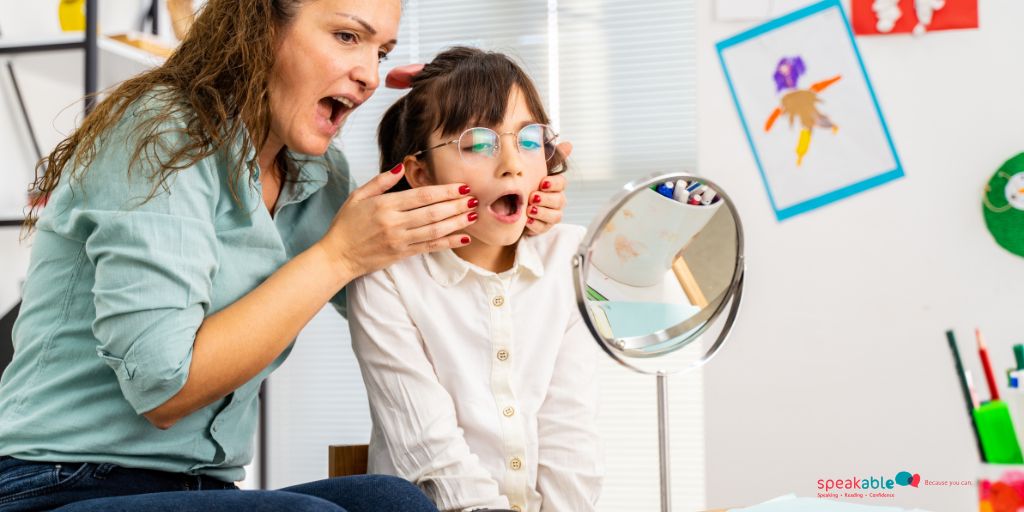Breaking Down Communication Disorders
Understanding the Complexity of Speech and Language
Communication is essential for human interaction. Through speech and language, we express thoughts, build relationships, and navigate the world. However, not everyone develops these skills at the same pace. Some individuals experience challenges with speech, language, or communication, which can impact their social, emotional, and academic growth.
The Early Stages of Communication Development
By six months, babies begin their journey into communication. “Babbling and vocal play become more frequent, as infants start experimenting with different sounds,” explains speech-language pathologists. “By 12 months, they attempt their first words, mimic facial expressions, and show an eagerness to interact.”
At 18 months, children typically have a vocabulary of about 30 to 50 words. By age two, this number jumps to 200 to 300 words, marking a major speech development milestone. By age three, children start forming full sentences and becoming more understandable to others.
In this phase, toddlers begin to grasp spatial awareness, follow more complex verbal instructions, and engage in shared play, setting the foundation for advanced communication skills.
The Role of Speech Therapy in Communication Development
Speech therapy plays a crucial role in identifying and addressing speech and language challenges. “When difficulties arise, speech-language pathologists (SLPs) assess the child’s specific needs and guide their communication development,” explains experts in the field.
SLPs evaluate speech and language concerns, tailor intervention strategies, and work closely with families to create supportive learning environments at home. Early intervention ensures that children receive the guidance they need to develop strong communication abilities.
Types of Communication Disorders
Several types of communication disorders affect children and adults, including:
1️⃣ Speech Disorders
These affect how individuals produce sounds and articulate words.
- Articulation disorders – Difficulty forming certain sounds.
- Phonological disorders – Trouble recognizing speech sound patterns.
- Apraxia of speech – Difficulty coordinating mouth movements for speech.
2️⃣ Language Disorders
These impact a person’s ability to comprehend and use language effectively.
- Expressive language disorder – Difficulty forming sentences and expressing thoughts.
- Receptive language disorder – Struggling to understand spoken words and instructions.
- Mixed receptive-expressive disorder – A combination of both difficulties.
3️⃣ Fluency Disorders
Fluency disorders affect the rhythm and flow of speech.
- Stuttering – Repetitions, prolongations, or blocks in speech.
- Cluttering – Rapid or disorganized speech that is hard to understand.
4️⃣ Voice Disorders
These affect the quality, pitch, or loudness of speech.
- Dysphonia – A hoarse, strained, or weak voice.
- Resonance disorders – Imbalances in voice vibrations affecting clarity.
5️⃣ Social Communication Disorders
These disorders impact the ability to use language in social settings.
- Difficulty following conversation rules, such as turn-taking.
- Challenges in using nonverbal communication, like gestures and facial expressions.
- Struggling to adapt speech to different situations.
Early Intervention and Its Impact
The earlier a speech disorder is addressed, the greater the chance of positive long-term outcomes. Early intervention helps children strengthen communication skills, build confidence, and navigate their social and academic environments effectively.
For adults, speech therapy plays a critical role in rehabilitation after neurological conditions like stroke or Parkinson’s disease. Through tailored therapy sessions, individuals can regain communication abilities and improve their quality of life.
Tips for Supporting Speech and Language Development at Home
Helping a child strengthen their communication skills starts with daily interactions and intentional practices. Here are some expert-recommended strategies:
✅ Engage in conversation: Speak with your child regularly, using clear and simple language.
✅ Read together: Books introduce new words, sentence structures, and concepts.
✅ Sing songs and play rhyming games: Music enhances phonological awareness and memory.
✅ Encourage turn-taking in conversations: Teach children how to listen and respond.
✅ Use gestures and visual aids: These can help reinforce verbal communication.
✅ Be patient and provide positive reinforcement: Celebrate progress to encourage motivation.
When to Seek Professional Help
If a child or adult shows persistent difficulties with speech, language, or communication, consulting a speech-language pathologist is recommended. An SLP can evaluate specific needs, develop a personalized therapy plan, and provide guidance for families and caregivers.
“Even if you’re unsure whether intervention is necessary, it’s always a good idea to seek a professional opinion. A quick evaluation can provide peace of mind or lead to valuable early support,” advises speech therapists.
Final Thoughts: Unraveling the Complexities of Communication
Understanding and addressing communication disorders is essential for improving speech clarity, confidence, and overall well-being. Whether it’s a child struggling with phonological development or an adult recovering from a speech impairment, speech therapy can be life-changing.
🔗 Want to learn more? Visit our blog for expert insights on speech and language development!
💬 Have questions or experiences to share? Drop a comment below!
#SpeechTherapy #CommunicationMatters #LanguageDevelopment #SpeechPathology #EarlyIntervention #Speakable




